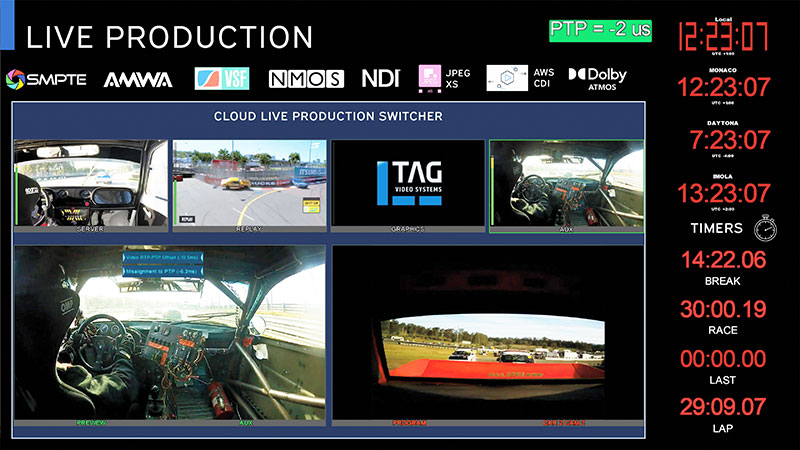TAG Video released upgrades and added support to its Realtime Media Monitoring Platform for live production, from JPEG-XS transport protocols to NMOS specifications for IP interoperability.

TAG Video Systems has released a series of upgrades, enhancements and added support to its Realtime Media Monitoring Platform for live production environments. The suite of live production tools has been incorporated into the recent version of the company's MCM (Multichannel Monitoring System) and addresses aspects of live production including cloud, hybrid and remote operation. FOX Sports recently selected the platform as its monitoring and visualization provider at the football tournament in Qatar.
TAG has recently added comprehensive support for JPEG-XS transport protocols to allow live production in the cloud. JPEG XS answers the need for visually lossless quality with extremely low delay, and now that the format is gaining momentum, TAG has broadened support to include all three main transport protocols for JPEG XS stream reception and transmission -- TR-07 for MPEG-2 TS over IP, TR-08 for ST 2110-22 and now CDI for use in the Amazon cloud. Comprehensive support of JPEG XS allows bandwidth reduction while maintaining quality level, important for remote live contribution and production scenarios.
In 2022, TAG introduced Bridge Technology as a super-efficient, economical architecture that enables an operator to receive a source once – including video, audio and metadata – and display it directly on any TAG system, anywhere, for visualization or monitoring regardless of input source, size or format. Once the stream is ingested, the TAG Bridge automatically optimises the sizing, format and delivery protocol to fit any configuration of multiple recipients, removing the complexity of routing the same stream to diverse locations. The economical reuse of redundant signal sources lowers overall compute usage and allows bandwidth optimization in large systems while retaining the quality and low latency required for live applications.
The network services VLAN and LACP have become popular for managing network utilization and have recently become powerful tools for live IP systems.
VLAN (Virtual Local Area Network) enables the virtualization of multiple networks onto one physical network interface, maximizing use of high-bandwidth interfaces. New support for VLAN now allows the MCM to combine, visualize and control various streams from different computer networks all on one interface. A singular point of control reduces complexity and simplifies network management.
LACP (Link Aggregation Control Protocol) support enables the use of multiple links for resiliency and provides load-balancing capability. LACP is a dynamic protocol that can separate a stream and transport it over many different paths to even out bandwidth usage. This load sharing avoids the threat of overloading a network in a live production environment by automatically detecting high-congestion links and moving content to less trafficked paths.
NMOS (Networked Media Open Specifications) is a family of open specifications that enable interoperability between media devices on an IP infrastructure. As well as supporting NMOS IS-04, which deals with discovery and registration, and NMOS IS-05, which covers device connection management, TAG’s MCM now supports NMOS BCP-002-01. This new specification enables individual audio, video and metadata streams in ST 2110 - originating from different or unrelated sources - to be grouped and assembled automatically on the receiving end. Support for NMOS BCP-002-01, which works in the cloud or on-premises, allows the receiver to define and group elements of a live production, easing the time and complexity traditionally associated with assembling diverse sources required for a complete program.
The Precision Time Protocol (PTP) is used to synchronize clocks throughout a computer network with nanosecond accuracy and is mandatory for 2110 systems. TAG’s functionality now includes visualization of PTP statistics directly on the multiviewer screen, allowing the operator to view PTP data at a glance for more confidence regarding the health of the system reference clock used for timing in a live production environment where precision timing counts.
The MCM now includes the Plura SPT family of production timers, including the multi-line MTD-ID desk panel. This feature enables heads-up use of these devices in a live production environment by allowing them to display on the multiviewer mosaic.
The MCM’s ability to display multi-UMD and Tally has been expanded with extra visualization features enabling tallying of various aspects of UMD visualization in addition to the usual tally indicators. TAG has also incorporated a native timer functionality enabling use of precision timing elements in UMD / clock displays for any aspect of production timing. www.tagvs.com




